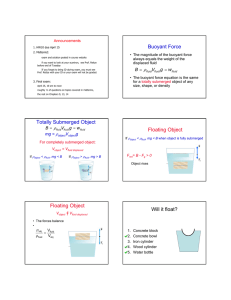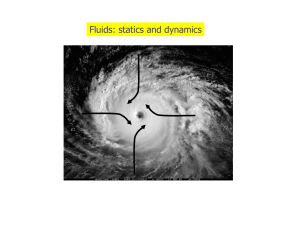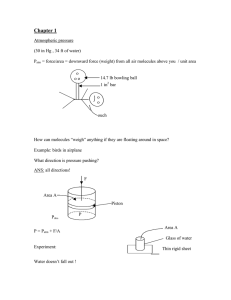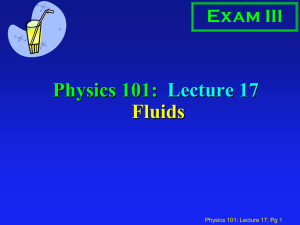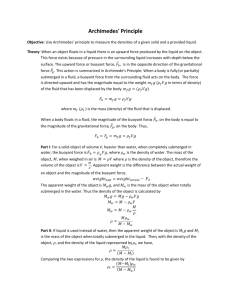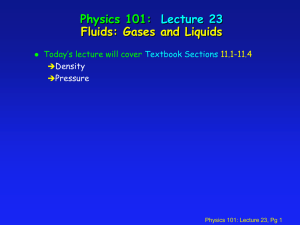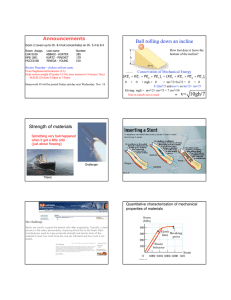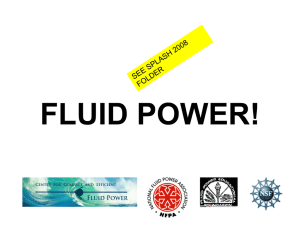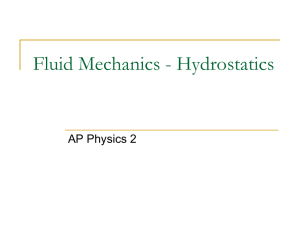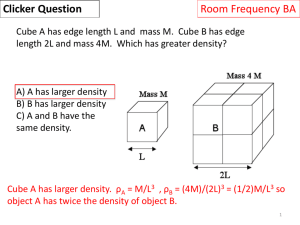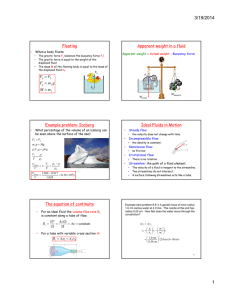Document 10455546
advertisement
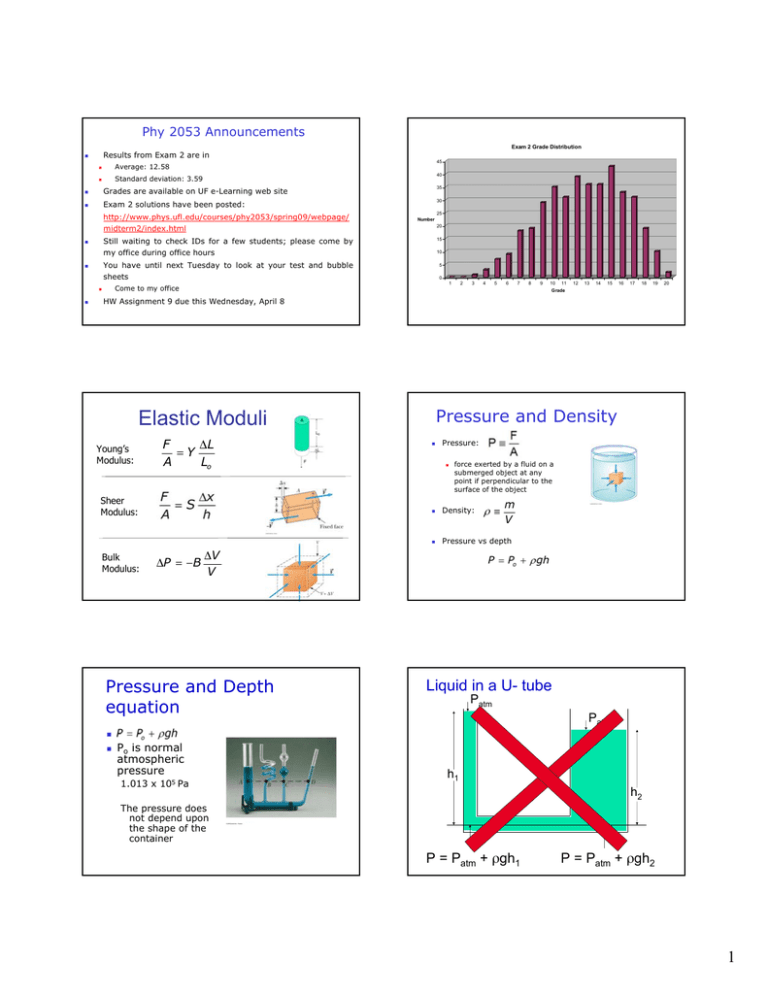
Phy 2053 Announcements Exam 2 Grade Distribution Results from Exam 2 are in 45 Average: 12.58 40 Standard deviation: 3.59 Grades are available on UF e-Learning web site 35 Exam 2 solutions have been posted: 30 http://www.phys.ufl.edu/courses/phy2053/spring09/webpage/ midterm2/index.html 20 Still waiting to check IDs for a few students; please come by my office during office hours 15 10 You have until next Tuesday to look at your test and bubble sheets 5 0 1 Come to my office 25 Number 2 3 4 5 6 7 8 9 10 11 Grade 12 13 14 15 16 17 18 19 20 HW Assignment 9 due this Wednesday, April 8 Pressure and Density Elastic Moduli Young’s Modulus: F ΔL =Y A Lo Sheer Modulus: Bulk Modulus: Pressure: force exerted by a fluid on a submerged object at any point if perpendicular to the surface of the object ρ ≡ m V Density: Pressure vs depth ΔV ΔP = −B V Pressure and Depth equation Liquid in a U- tube Patm Patm Po is normal atmospheric pressure 1.013 x 105 Pa h1 h2 The pressure does not depend upon the shape of the container P = Patm + ρgh1 P = Patm + ρgh2 1 Pressure Measurements: Barometer Liquid in a U- tube Patm Patm Invented by Torricelli (1608 – 1647) A long closed tube is filled with mercury and inverted in a dish of mercury h1 h1 = h2 h2 P = Patm + ρgh1 P = Patm + ρgh2 Buoyant Force (will it float?) The magnitude of the buoyant force always equals the weight of the displaced fluid B = ρ fluidVfluid g = wfluid The forces balance ρobj ρ fluid = Vfluid Vobj The buoyant force is the same for a totally submerged object of any size, shape, or density Totally Submerged Object Floating Object If the object is less dense than the fluid, the object experiences a net upward force If the object is more dense than the fluid the net force is downward Totally Submerged Object B = ρfluidVfluid g = wfluid mg = ρobjectVobjectg For completely submerged object: Vobject = Vfluid If ρobject < ρfluid, mg < B If ρobject > ρfluid, mg > B 2 Example – P9.43 43. A 1.00-kg beaker containing 2.00 kg of oil (density = 916 kg/m3) rests on a scale. A 2.00-kg block of iron (density = 7.86 × 103 kg/m3) is suspended from a spring scale and is completely submerged in the oil (Fig. P9.39). Find the equilibrium readings of both scales. Equation of Continuity • A1v1 = A2v2 • The product of the cross-sectional area of a pipe and the fluid speed is a constant – Speed is high where the pipe is narrow and speed is low where the pipe has a large diameter • Av is called the flow rate Bernoulli’s Equation • States that the sum of the pressure, kinetic energy per unit volume, and the potential energy per unit volume has the same value at all points along a streamline P+ 1 2 ρv + ρgy = constant 2 Just due to energy conservation Applications of Bernoulli’s Principle: Venturi Tube • Shows fluid flowing through a horizontal constricted pipe • Speed changes as diameter changes • Can be used to measure the speed of the fluid flow • Swiftly moving fluids exert less pressure than do slowly moving fluids P+ 1 2 ρv + ρgy = constant 2 Application – Airplane Wing • The air speed above the wing is greater than the speed below • The air pressure above the wing is less than the air pressure below • There is a net upward force – Called lift • Other factors are also involved 3
